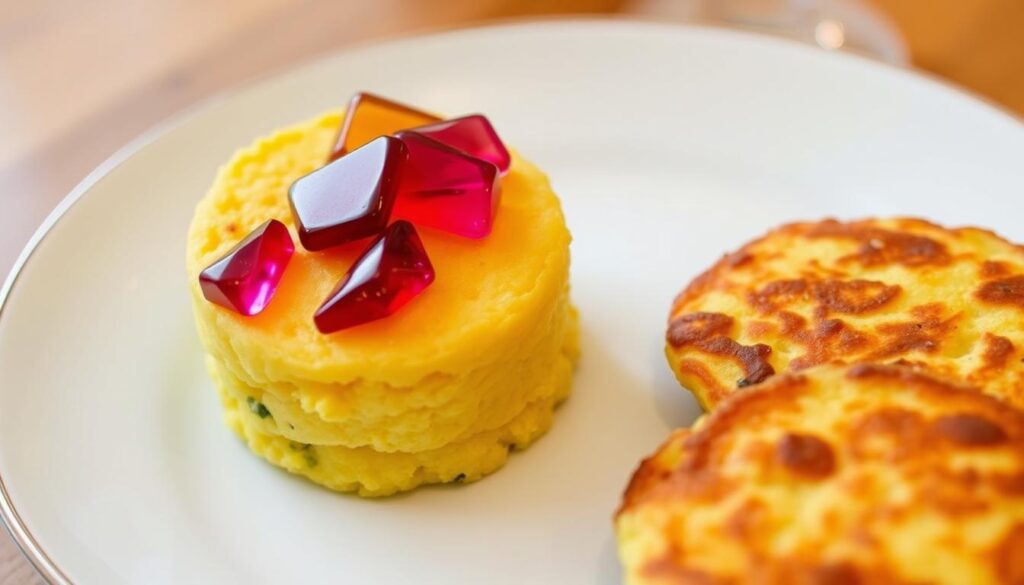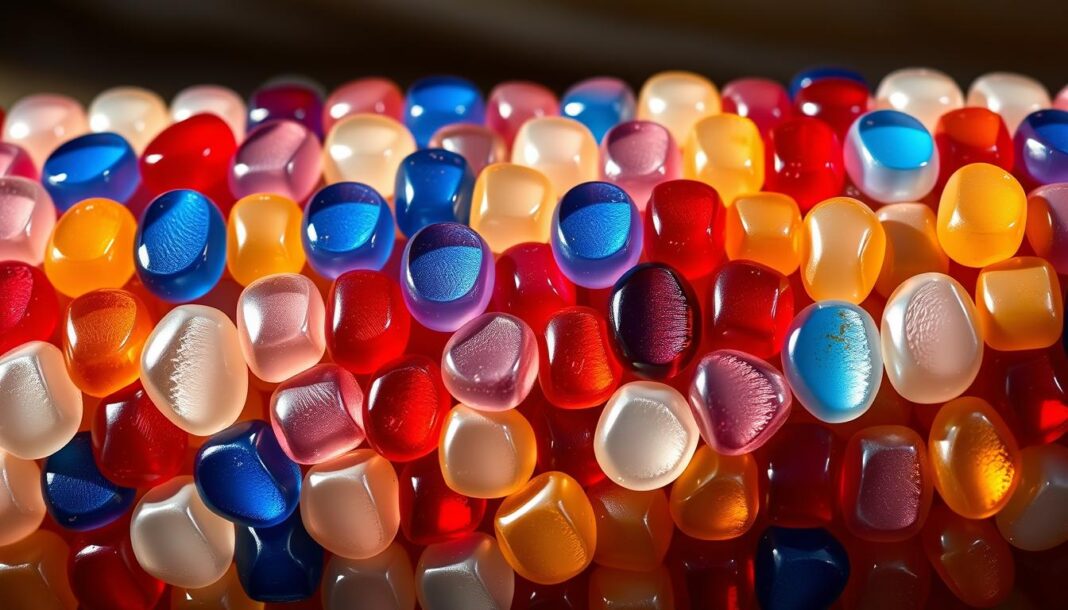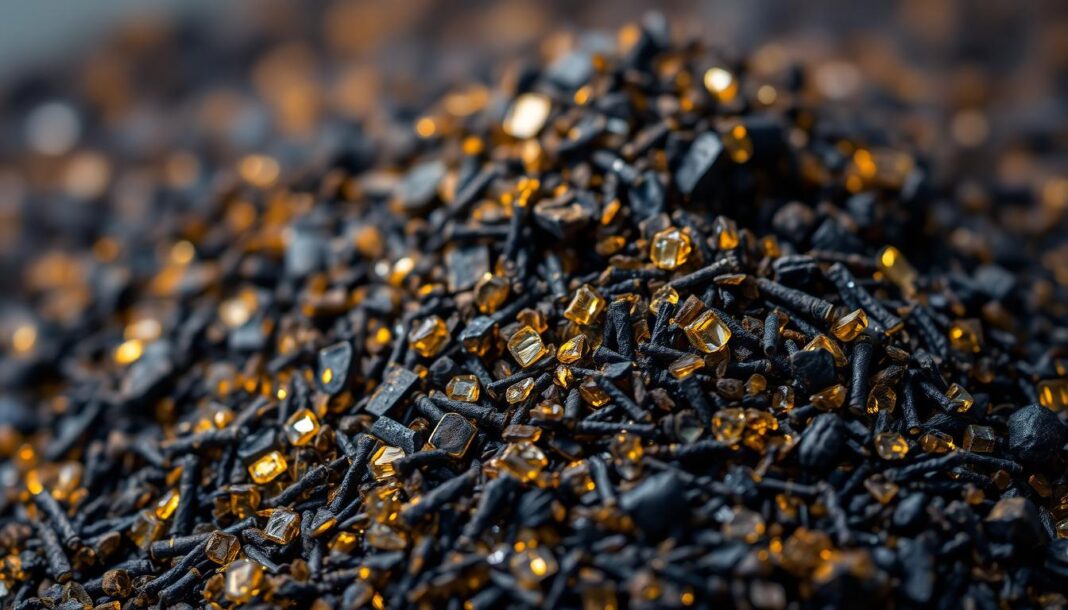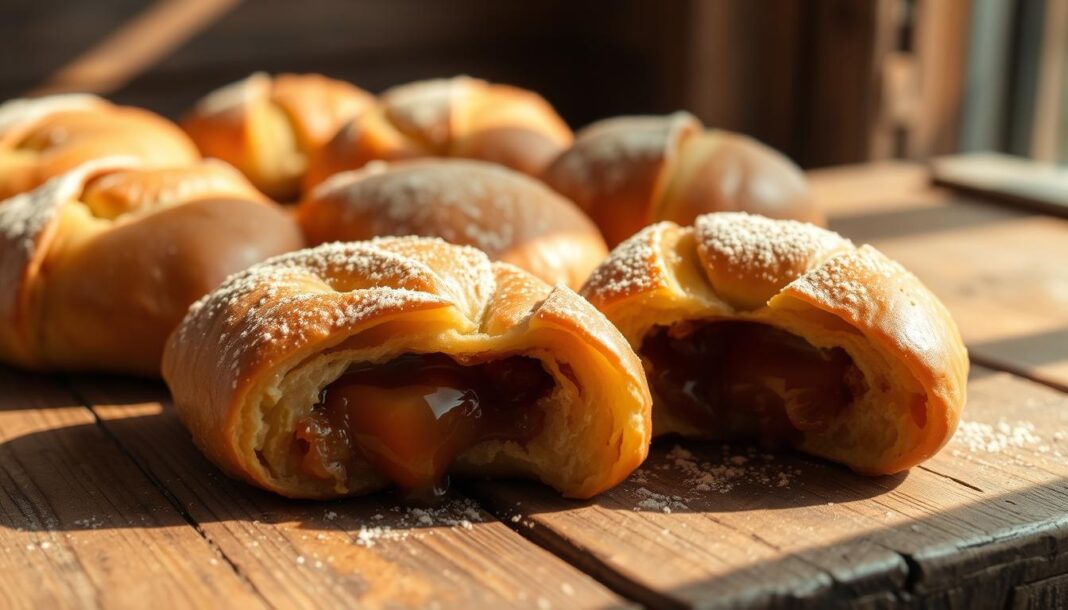At Historical Foods, we’re excited to share our journey with glass gem corn, an heirloom variety that’s as stunning as it is versatile. This colorful grain has captured the hearts of food enthusiasts and gardeners alike, not just for its breathtaking visual appeal but also for its unique culinary possibilities.
Our team has extensively tested various cooking methods to bring out the best in glass gem corn. From making cornmeal to popping and dehydrating, we’ve explored it all. In this article, we’ll guide you through the process, highlighting the properties that make glass gem corn different from conventional sweet corn varieties.
Whether you’re a casual home cook or a culinary professional, our tested cooking methods will help you unlock the full potential of this beautiful grain. We’ll discuss the best ways to harvest, prepare, and cook glass gem corn, setting you up for success in the kitchen.
Key Takeaways
- Discover the unique properties of glass gem corn that set it apart from other varieties.
- Learn various cooking methods to bring out the best in this colorful grain.
- Understand how to harvest and prepare glass gem corn for cooking.
- Explore different recipe ideas using glass gem corn.
- Get tips on making cornmeal, popping, and dehydrating glass gem corn.
What Makes Glass Gem Corn Special
The story behind Glass Gem corn is as fascinating as its appearance, rooted in the dedication of Carl Barnes, a part-Cherokee farmer from Oklahoma. Barnes had a remarkable talent for selecting and saving seeds from corn cobs that displayed vivid, translucent colors. His meticulous efforts over many years resulted in a unique corn cultivar that has captivated audiences worldwide.
The Colorful History of Glass Gem Corn
Carl Barnes’ work on Glass Gem corn not only preserved genetic diversity but also honored indigenous agricultural traditions. By selectively breeding corn for its vibrant appearance, Barnes created a true masterpiece. The history of Glass Gem corn is a testament to the power of traditional farming practices and the importance of preserving heritage crops.
Understanding Flint Corn Characteristics
Glass Gem corn is classified as a type of flint corn, known for its hard outer layer and starchy interior. This classification affects its culinary uses, making it less suitable for eating fresh off the cob but ideal for other preparations. The table below summarizes key characteristics of flint corn, including Glass Gem.

| Corn Type | Outer Layer | Interior | Culinary Use |
|---|---|---|---|
| Flint Corn | Hard | Starchy | Grinding, Cooking |
| Sweet Corn | Soft | Sweet, Tender | Eating Fresh |
| Dent Corn | Soft on Top | Starchy | Animal Feed, Ethanol |
Understanding the characteristics of flint corn helps in appreciating the unique qualities of Glass Gem corn and its potential uses in cooking and food preparation.
Preparing Your Glass Gem Corn for Cooking
To make the most of your Glass Gem Corn, proper preparation is key. This involves understanding the best practices for harvesting, drying, and processing your corn to preserve its unique qualities and flavor.
Harvesting and Drying Methods
Harvesting Glass Gem Corn at the right time is crucial. We look for visual cues such as the drying of the husks and the browning of the silks to determine maturity. Once harvested, drying the corn thoroughly is essential to prevent mold and spoilage. We recommend both natural air-drying methods and accelerated drying techniques for those who need to use their corn sooner.
Drying can be done by spreading the ears out in a single layer, either on a surface indoors or outdoors under cover, ensuring good airflow around each ear. The goal is to reduce the moisture content to a level that prevents mold growth, typically below 15%.

Removing Kernels from the Cob
Once your Glass Gem Corn is dry, the next step is to remove the kernels from the cob. To do this safely and efficiently, hold the cob firmly on its side with one hand, and with a sharp knife in your other hand, carefully run the blade down the length of the cob. This should release the kernels. Make sure to move slowly to keep the kernels intact.
| Step | Action | Tip |
|---|---|---|
| 1 | Hold the cob firmly | Use one hand to steady the cob |
| 2 | Cut down the cob | Use a sharp knife and cut slowly |
| 3 | Collect kernels | Make sure to catch all the kernels in a container |
After removing the kernels, sort and store them according to your intended use, whether it’s for grinding into cornmeal, popping, or dehydrating. Proper storage in airtight containers will help preserve the kernels’ flavor and color.
Creating Homemade Glass Gem Corn Meal
Making glass gem cornmeal from scratch is not only rewarding but also surprisingly easy, requiring just a few key pieces of equipment. With glass gem corn being a type of flint corn, it’s particularly well-suited for grinding into cornmeal, which can be used in a variety of dishes, from grits to cornbread.
Equipment You’ll Need
To grind your glass gem corn into cornmeal, you’ll need a powerful blender or a dedicated grain mill. We recommend using the strongest blender you have, as it will produce the finest cornmeal. A high-powered blender is capable of grinding the kernels into a smooth, consistent texture. If you don’t have a high-powered blender, a grain mill is a good alternative.

Step-by-Step Grinding Process
To grind your glass gem corn kernels, start by placing them in your chosen blender. Begin at the lowest speed possible, then gradually increase it to medium and finally to high. This gradual increase in speed helps prevent the kernels from clogging the blades. Continue blending until you achieve the desired texture, which should resemble store-bought cornmeal. The process typically takes around one minute with a strong blender, but may take longer with less powerful equipment.
As you blend, listen for the change in sound that indicates the kernels are being ground into a finer texture. The resulting cornmeal should have a sand-like consistency. This freshly ground cornmeal is not only more flavorful but also retains more nutrients compared to store-bought varieties.
Storage Tips for Fresh Cornmeal
Once you’ve ground your corn into cornmeal, it’s essential to store it properly to maintain its freshness. Transfer the cornmeal to a sealed glass container and keep it in the refrigerator. This will help extend its shelf life, allowing you to enjoy your homemade cornmeal for around a year. Proper storage is key to preserving the nutritional value and flavor of your freshly ground cornmeal.
Delicious Glass Gem Corn Recipes to Try

Now that we’ve explored the unique characteristics of Glass Gem Corn, it’s time to dive into some delicious recipes that showcase its flavor and versatility. Using freshly ground Glass Gem Cornmeal, you can create dishes that are not only visually stunning but also packed with a rich, nutty flavor.
Traditional Glass Gem Cornbread
One of the most classic uses for cornmeal is in cornbread, and Glass Gem Corn takes this traditional recipe to a new level. Our tested recipe for Traditional Glass Gem Cornbread highlights the unique flavor profile that makes this cornbread distinctly different from versions made with commercial cornmeal.
To make this cornbread, you’ll need 2 cups of finely ground Glass Gem Cornmeal, 1 tablespoon of baking powder, 3/4 teaspoon of salt, 1/4 teaspoon of xanthan gum, 1 organic egg, 1 cup of milk (such as unsweetened almond milk), 1/4 cup of olive oil, and 1 tablespoon of honey. Preheat your oven to 425 degrees, whisk together the dry ingredients, and then add the remaining ingredients, stirring until just blended. Pour the mixture into buttered muffin pans and bake for 20 to 24 minutes, or until lightly browned.
Savory Corn Pancakes
For a delicious breakfast or light dinner option, consider making Savory Corn Pancakes using freshly ground Glass Gem Cornmeal. These pancakes are not only flavorful but also offer a delightful texture that’s sure to please.
The unique flavor profile of Glass Gem Corn enhances these classic recipes, providing a depth and complexity not found in dishes made with conventional corn. You can customize these recipes to suit your dietary preferences or available ingredients, and we’ve included serving suggestions to help you create complete, balanced meals.
By incorporating Glass Gem Corn into your cooking, you can add a new dimension to your meals and explore the rich culinary possibilities this ingredient has to offer. Whether you’re making cornbread or savory pancakes, the taste and texture of Glass Gem Corn are sure to impress.
Popping Glass Gem Corn
Popping glass gem corn is an exciting way to enjoy this colorful variety, and with the right techniques, you can achieve perfectly popped kernels. To start, it’s crucial to understand the process of preparing the kernels for popping.
Preparing Kernels for Popping
To pop glass gem corn, the kernels must be properly dried. Drying is critical because moisture content affects the popping efficiency. We recommend using dehydrated kernels for the best results. Once your kernels are dry, you can proceed with the popping process.
Best Popping Methods
There are several methods to pop glass gem corn, but using a pan on the stovetop is one of the most effective. Heat three tablespoons of oil in a three-quart saucepan over medium-high heat. We suggest using coconut, peanut, or canola oil for their high smoke points and flavor profiles. Once the oil is hot, add 1/3 cup of kernels and cover the pan. Remove from heat for 30 seconds, then return to heat, shaking the pan periodically to ensure even popping.
Flavor Variations for Popcorn
The flavor of glass gem popcorn is nutty and slightly sweet, making it a versatile base for various seasonings. You can enhance the flavor with salt, herbs, or spices. Here are some seasoning combinations to try:
| Seasoning | Flavor Profile |
|---|---|
| Salt and Paprika | Smoky and Savory |
| Garlic Powder and Parsley | Aromatic and Fresh |
| Cinnamon and Sugar | Sweet and Spicy |
Dehydrating Glass Gem Corn
To enjoy glass gem corn year-round, dehydrating is an excellent preservation method that retains its beauty and flavor. Dehydrating glass gem corn allows you to preserve its vibrant colors and delicious taste, making it a great addition to various dishes throughout the year.
Blanching Process
Before dehydrating, it’s crucial to blanch the glass gem corn. Blanching involves briefly submerging the corn in boiling water to inactivate enzymes that could cause loss of flavor, color, and texture. To blanch, bring a pot of water to a boil, adding a few teaspoons of salt if desired. Submerge the corn for three to five minutes, then immediately transfer it to a bowl of ice water to stop the cooking process.
Using a Dehydrator Effectively
Once blanched and cooled, remove the kernels from the cob. Spread the kernels in a single layer on a dehydrator tray, ensuring they don’t overlap. Set the dehydrator to 120 degrees Fahrenheit (about 49 degrees Celsius). Dehydrate until the kernels are hard and crispy, which can take between 12 and 14 hours, depending on the quantity. Check on the kernels periodically to ensure even drying.
Creative Uses for Dehydrated Corn
Dehydrated glass gem corn is incredibly versatile. You can use it in soups, stews, and trail mixes, or as a decorative element in food crafts. The vibrant colors of the corn add a visually appealing touch to any dish. Some ideas include:
- Adding dehydrated corn to homemade granola for a burst of color and flavor
- Using it as a topping for salads or yogurt parfaits
- Incorporating it into bread or muffin recipes for added texture and nutrition
By following these steps, you can enjoy glass gem corn throughout the year, preserving its unique beauty and flavor.
Preserving the Beauty and Flavor of Glass Gem Corn
As we conclude our journey with Glass Gem Corn, it’s essential to understand the importance of preserving its beauty and flavor. To enjoy this heirloom variety throughout the year, proper storage is crucial. We recommend storing kernels in an airtight container, such as a canning jar, to maintain their quality.
For long-term storage, it’s vital to control temperature and humidity conditions. We suggest keeping the containers in a cool, dry place, like a kitchen cabinet. When stored properly, Glass Gem Corn kernels can last indefinitely, while popped popcorn typically remains fresh for two to three weeks.
In addition to storing kernels, you can also save the most vibrant seeds for replanting, allowing you to grow your own Glass Gem Corn and potentially develop unique color variations over time. To showcase the natural beauty of Glass Gem Corn, consider using traditional corn hangers or modern glass container arrangements in your home decor.
By preserving Glass Gem Corn, you’re not only enjoying its flavor but also connecting with a broader agricultural heritage. This heirloom variety is a testament to the importance of preserving traditional crops and the cultural significance they hold.


